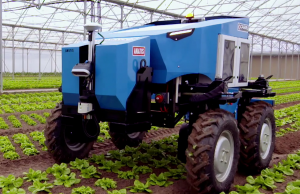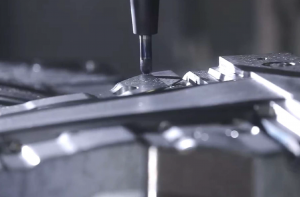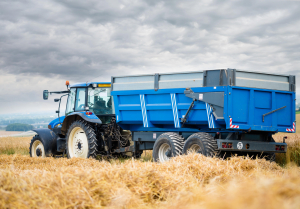Anatis: the autonomous mobile agricultural robot
Using our expertise in computer science and in robotic demonstrator design to work with Carré HKTC on developing an agricultural robot

Key words
Linked expertises
DEVELOPING A ROBOTIC MULTI-SENSOR DETECTION SYSTEM
The manual detection of landmines is a complex and hazardous process. In order to automating it, CAPACITÉS’s experts performed at first a exhaustive analysis of the manual detection process and its constraints. Following this preliminary phase, they were then able to offer a suitable set of specifications for a mobile, multifunctional robotic system. Their primary achievement was combining the sensors in such a way as to provide unprecedented flexibility of use. The associated technologies include ground-penetrating radar, sounding and vision sensors. Their second accomplishment involved multi-parameter analysis through AI.
By considering factors such as soil type, the nature of the object and its position, the operator thus possesses pre-analysed information promoting enhanced decision-making. The resulting machine can be as well operated remotely and fulfils other tasks of the detection process such as demarcating the study area. Mounted on a mobile platform and equipped with a multi-articulated arm, the robot is also easy to transport and can be operated in a wide variety of environments. This project, conducted in partnership with SHARK ROBOTICS, received support from the Ministère de l’Economie et des Finances (Ministry of Economy and Finance), the Direction Générale des Entreprises (Directorate General for Enterprise) and AID.
To successfully complete this project, the experts at CAPACITÉS SAS greatly profited from the support and technical resources offered to them by the teams at the Laboratoire des Sciences du Numérique de Nantes, LS2N (Laboratory of Digital Sciences of Nantes).
These projects may also interest you
These projects may also interest you

Using our expertise in computer science and in robotic demonstrator design to work with Carré HKTC on developing an agricultural robot

This French foundry worked with engineers from Capacités and received a global support throughout the automating process.

Monroc designs and manufactures trailer axles for agricultural and industrial machines. It contacted the mechanical engineering experts at Capacités to help develop an innovative force sensor that measures the longitudinal force caused by towing while simultaneously filtering out vertical and lateral gyration forces. It is designed to be positioned at the hitch of tractors that haul loads weighing several dozen tons.
This site uses cookies and gives you control over what you want to enable